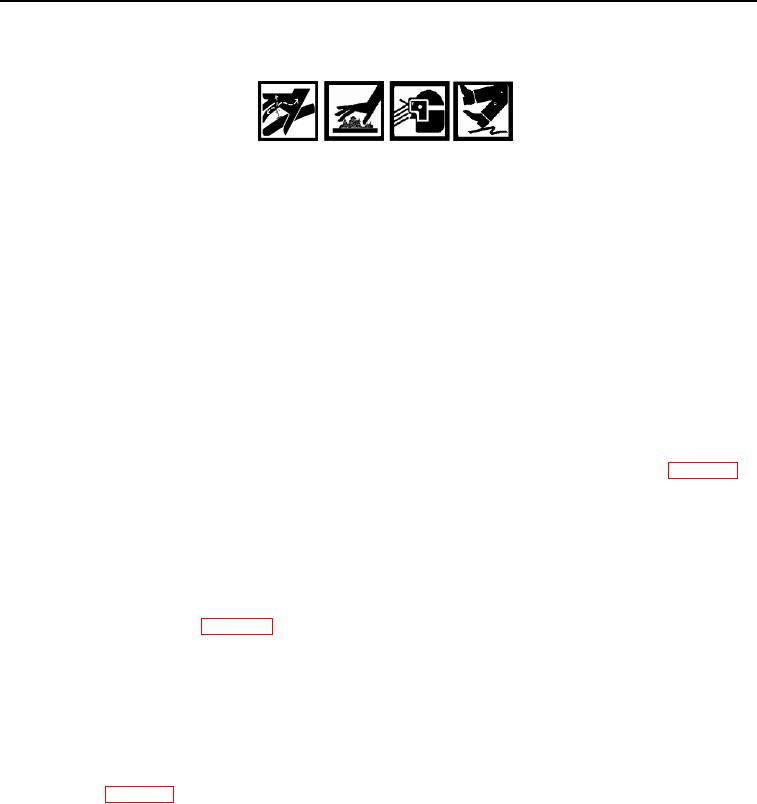
TM 5-2410-240-23-1
0031
CHARGE RELIEF VALVE - ADJUST
00031
WARN I N G
DO NOT disconnect or remove any hydraulic system hoses, tubes, or fittings unless
engine is shut down and hydraulic system pressure has been relieved. Escaping hydraulic
fluid under pressure can penetrate skin.
At operating temperature, hydraulic oil is hot. Allow hydraulic oil to cool before removing
any hydraulic fitting.
Wear protective eye covering and gloves.
Lubricating/hydraulic oils used in perfomance of maintenance can be very slippery.
r
Immediately wipe up any spills.
Failure to follow these warnings may result in injury or death to personnel.
C AU T I O N
Wipe area clean around hydraulic system, and cap all hydraulic hose ends along with
component connections during removal to protect against contamination. Failure to follow
this caution may cause damage to equipment.
Charge oil flows from hydraulic oil filter to each hydrostatic pump. When pressure increases within hydrostatic
pump hydraulic oil is discharged into piston pump case drain and returns to hydraulic system. Refer to WP 0007 for
detailed description of charge relief valve. This procedure allows guidelines needed for increasing or decreasing
pressure for charge relief valve.
Setup Procedure
00031
1. Inspect hydraulic system for Class III leakage and damage. Hydraulic lines must be free from kinks, sharp
bends, and restrictions.
2. Turn ignition switch to OFF position (TM 5-2410-240-10).
3. Connect MSD to machine (WP 0016).
4. Turn battery disconnect switch to ON (TM 5-2410-240-10).
5. Turn ignition switch to ON position. Start ET and select machine control ECM.
N OT E
Wait at least 30 seconds for diagnostic codes to become active.
6. Monitor active diagnostic codes with ET. Check and record any active diagnostic codes. If diagnostic codes are
set, refer to WP 0013.
7. Operate machine until hydraulic system oil temperature is at least 104F 9F (40 5C).
8. Stop engine, and relieve hydraulic system pressure (WP 0162).
9. Remove cab front floor plate (WP 0205).
0031-22

